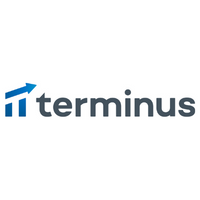3 Questions: Demystifying Technology Exits with John McDonald
This is a follow-up piece to Demystifying Venture Capital in our “3 Questions” series contributed by subject matter experts throughout the tech community in Indiana. This series takes complex tech topics and explains them in easy-to-understand ways without the dense jargon so every reader can learn a little bit more about our industry.
So, you’ve piloted your technology company successfully through each of the four startup stages: ideation, productization, launch and scale, and you’ve built a profitable and growing organization that people want to work for and buy from.
You’ve built a good business! what happens next?
Once you are making a profit and no longer need venture capital to grow, you have two possible options. The first is to keep going and growing as an independent, stand-alone business. This is the pathway that most traditional businesses take, but it’s more difficult in the tech industry, as technology becomes obsolete fairly rapidly. To continue as an ongoing tech company you must continually re-invent yourself and your product offerings, using your profits as your own seed capital to start the ideation, productization and launch phases again over and over.
The second option is to seek a buyer for your company. There are three basic routes.
The first route is to sell it to the general public. With this option, you offer stock in your company to anyone who would like to buy it through an “Initial Public Offering” or IPO. This involves registering with the Securities and Exchange Commission, and usually hiring an “underwriter.” An underwriter is a financial firm that administers the sale of the stock, including determining the price, purchases all of the issued stock and resells it through their own distribution network, and guarantees the number of shares sold at the initial offering price. This option is quite rare for companies in Indiana, because it requires your company to be large enough to justify the hiring and retention of the specialized teams of people needed to manage public investors and the regulatory process. The last substantial IPO of a technology-based company in Indiana was the spinoff of Elanco Animal Health from Eli Lilly in 2018, a company obviously sophisticated enough to make it happen.
The second route is to sell it to a private equity (PE) fund. PE firms are similar to venture capital funds in their structure, in that they have limited partners, an investment thesis, and strong policies related to investment criteria and management. However, PE firms seek to buy working, profitable businesses that they can invest more capital into and grow before selling them at a profit after a specific period of time. They are not unlike people who buy houses that need some attention to fix problems or improve buyer appeal, then work to address those issues, and finally sell those houses at a profit. PE firms take this approach with companies instead of houses, and as such, the PE buyer generally intends to keep the company intact, improve it, and sell it as a going concern in line with the original mission of the company when purchased. This is unusual but not unheard of in Indiana: Baker Hill, Ontario Systems and our own ClearObject were all recently acquired by private equity firms.
The third route is to sell it to a strategic buyer. Strategic buyers purchase companies for any number of reasons, but always because one or more elements of the company help them with their strategic plans and initiatives. This could be for a specific technology you’ve developed, a team you’ve created, a market you’ve engaged or all of the above. Their belief is that when added to their own company, the strategic elements they are acquiring from you will make the result stronger. The strategic buyer usually doesn’t intend on keeping your company intact – they will often fold elements into their own structure and let go or shut down the elements that overlap with what they are already doing. This is the most likely outcome for technology companies in Indiana: Costello, Mimir and Sigstr were all acquired by strategic buyers in the fourth quarter of 2019.
Which exit option should you pick?
It’s quite likely that the answer will be up to your investors. If you’re a typical Indiana startup, you’ve long ago sold most all of your equity to investors to fuel the growth of your company, and so the decision about how to best realize a return on the investment will be in their hands. If they have “investor fatigue” and are not excited about continuing to re-invest profits in continual transformation of the company, they will be leading you down a road to a sale. If they don’t believe the company has grown in sophistication enough to justify an IPO, they will be leading toward a PE or strategic buyer sale, both of which usually involve the hiring of a type of firm called an “investment bank” to manage the process of offering the company for sale. These firms are not unlike realtors in the real estate business, except that they are representing your company instead of a home.
Why do most Indiana tech company sales result in a strategic buyer vs. a private equity firm acquisition?
The reason is that strategic buyers often pay more for a company than PE firms. Private equity looks at a transaction much like a bank would—it’s simply a math equation. However, strategic buyers seek your company for reasons beyond just what the numbers say—for a strategic reason. They believe that “1+1 is more than 2” if they could just add what you’re doing to what they are already doing. As such, if presented with an offer from a PE firm and another offer from a strategic buyer, the strategic buyer’s offer will likely be higher, and a board made up of investors seeking an exit is likely to bite on the bigger number.
All of this is common, normal, and part of the structure of the technology business. Here in the United States we have the most robust and mature technology economy largely because we have the most robust and mature venture capital industry. While most of America’s early economic growth could be attributed to exploitation of natural resources, and later to industrialization, it’s clear that a significant amount of our global economic leadership has come from technology and venture capital for the last half century. It’s great that Indiana’s entrepreneurs are an important and growing part of this story, as we together seek to advance beyond industrialization into the digital data economy.
If you would like to write a 3 Questions article about a tech topic you know well, fill out the 3 Questions Form. If you have other story ideas to contribute to TechPoint Index, learn more about becoming a contributor.









